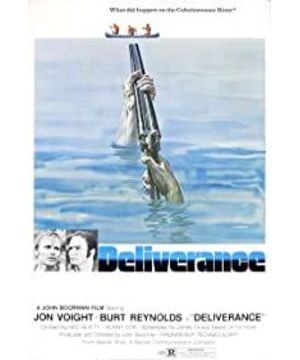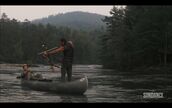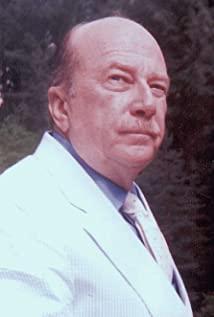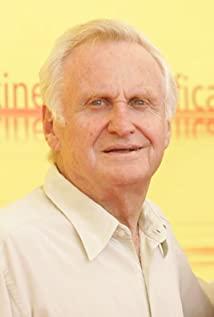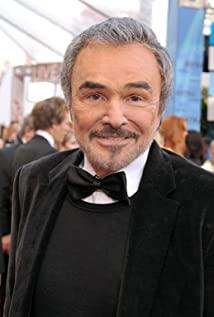______________________________________________________________________
As an amateur movie fanatic, Li Bucai is one of the few genres that I don’t watch, including "scare films" that test the strength of the bladder . Before explaining the “thriller movie”, first define the “thriller movie”: Thriller movie targets “human psychology”, whether it’s campus ("Witch Belle"), science fiction ("Alien"), mental illness ("Horror") ), supernatural ("The Shining", "Archmage"), and zombies ("Night of the Living Dead") are the creative backgrounds, and the purpose is to "put people in extreme environments and explore human nature and society." Therefore, the thriller that fits the above definition is not the superficial flesh and blood, but the hidden sociology of directors. For example, Hitchcock was influenced by psychoanalysis to film Necrophilia's "Victoria" and personality split "Crystal"; the godfather of zombie film George A. Romero, used "living corpse" as a metaphor for "proletariat."
As for "scare films", the social analysis of "thrillers" is removed, and only "character images", "shooting techniques" and other creative formulas are retained. The B film King John Carpenter's "Moonlight and Panic" (Halloween, 1978) followed the example of "Scary" and created a mentally ill murderer, while the psychoanalytic deduction was completely lost. Speaking of the ancestors of screen murderers, some netizens may have jumped out to say that the 1974 "The Texas Chainsaw Massacre" (The Texas Chainsaw Massacre) was the first human butcher. Jin Pai wrote that "Deliverance" was released in 1972, and "Straw Dog" with a similar theme was released in 1971.
Let's review the background history first. Friends who love American movies like Li Bucai will find that from the late 1960s to the first half of the 1970s, there were a number of masterpieces that questioned the system, sprouted blood, explored crime, and unearthed the dark side of mankind. The open list includes: "The Graduate" (The Graduate, 1967), "We Have No Tomorrow" (Bonnie and Clyde, 1967), "Cool Hand Luke, 1967", "Sunset Yellow Sand" (The Wild Bunch, 1967), Rosemary's Baby (1968), Night of the Living Dead (1968), Planet of the Apes (1968), Midnight Cowboy (Midnight Cowboy, 1969), Easy Rider (1969), Straw Dogs (1971), The French Connection (1971), A Clockwork Orange, 1971) and others. Compared with the above works, the usual movie views tend to be conservative; bloody and pornographic descriptions are avoided as much as possible, even if it is a crime movie, it is necessary to maintain a rewarding ending for good and evil. As for the questioning system, it is not within the scope of choice.
There are several reasons for this difference: First, the more stringent censorship system (Hays Code [Hays Code, 1930-1968]) lost its effectiveness at this time, and the film classification system was used for censorship. In the late 1960s, the climax of the resistance movement, people are more willing to see personal freedom (even crime) against oppression (state, law). 3. The rise of television in the 1950s caused a decline in the number of movie viewers. To make matters worse, at this time, the court ruled that the film manufacturer must not form a monopoly enterprise by integrating production, distribution, and screening, and the film manufacturer must give up the right to operate the theater. The two changes caused a sharp drop in the profits of filmmakers, and filmmakers began to wander outside the censorship system to attract audiences with stimulating themes. 4. At this time, the main crowd of movie viewers has turned into a post-war generation. Compared with their conservative parents, they are more willing to see crime, sex, and anti-system movies. 5. The rampant McCarthyism era has eliminated the left-wing forces in the American film industry. "Four Warriors of the Riptide" was born under this background.
Let's briefly describe the outline of the plot: Four men went to the mountains to go boating, but they were attacked by local residents. Except for the absence of young hot girls and the group, it is basically the structure of "scare films." There are two factors that determine the difference between "Four Warriors of the Torrent" and the scare film: First, the film explores the nature of human beings by presenting violence. 2. This film portrays different representative characters, and shows the potential of different characters through the encounters and reactions of these characters.
Each of the four friends has different characteristics, a metaphor for the psychological characteristics of human beings. Here we borrow the term of God analysis: Freud (Sigmund Freud, 1856-1934) believes that human consciousness is divided into three levels: "consciousness", "subconsciousness" and "unconsciousness". Three kinds of consciousness store our experience, memory and emotion. The consciousness is directly controlled by us, and the subconsciousness is conditionally activated; Proust recalls the past of his childhood through the "scent of milk". It is precisely by relying on external conditions that the stored experience of the subconscious will be effective. As for the unconscious, it is our repressed emotions and experiences. The reason for this distinction is that our personality is controlled by three kinds of "self": "intrinsic self", "self", and "superego". "I" refers to the desire response of "humans" as creatures: eat when you want to eat, sleep when you want to sleep, and reproduce when you want to reproduce. But being in a social group, based on seeking the best interests of oneself and the group, "people" must restrain the desires of the id. At this time, the id is hidden deep in the unconscious. In order to stabilize the mutually beneficial relationship of "social groups", groups have developed "taboos," "ethics," and "laws" constraints. These constraints form a person's moral consciousness (also a value judgment), that is, the "superego." The "self" is the "person" in daily life. The "person" is constantly shaped in a series of value judgments, and may be affected by the "superego" and the "indigenous self". After explaining the terminology, the role spectrum of "Four Warriors of the Torrent" can be drawn: the mountain dwellers are totally id, the archer (Ed) is biased towards the id, the mustache (Lewis) is the aggressive ego, and the chubby (Bobby) is the retreat The ego and guitarist (Drew) are the superego.
The two mountain people who embody the "complete self" attacked Mustache and Chubby without hesitation, and Chubby was forcibly "touched".
Sex is my main desire, and the mountain people ask Xiaopang to imitate the pig's cry, which also shows that he only obeys instinct.
Ordinary people in the environment can coordinate the desires of the self, make it vent or sublimate. But when the catharsis channel fails, the deeply hidden unconscious self begins to make troubles, and then produces mental anxiety. "Four Warriors of the Torrent" set up an extreme environment to make the id against the superego/system or against others. The beginning of the film alludes to the conflict between civilization and nature: in order to build dams to destroy the beauty of the valley, the four "civilized people" march to the "non-civilized area" in order to see the last figure in the valley. "Civilized people" and mountain dwellers are relatively speechless because they are "outsiders" to each other. Even if the guitarist and the children played a song together, the barrier was temporarily broken, and the music stopped and returned to the embarrassing scene. When mountain residents launch an attack and complete the "extreme environment", the personality traits of the four friends are representative.
The archer is a civilized self and does not believe that the social system can last forever. His positioning is probably that he was still practicing Beidou Shenquan during the Chengping era, and believes that people can only rely on themselves and restore animal instincts at critical moments. Therefore, when the four are in distress, the archer can kill without hesitation. The guitarist is the representative of the superego, reflecting the social system. When the archer killed the mountain man, the guitarist insisted on returning to the system. But in extreme environments, the superego is the easiest to dissolve (this is also a disaster theme convention). When the four buried the bodies, the guitarist was on the verge of collapse. After he was on the road again until he was attacked again, the director arranged an ambiguous perspective: whether the guitarist was actually shot, or whether he was insane and fell into the water after his rationality was broken. Moustache is himself, he is willing to accept everything modern society has given him, and he also likes occasionally to do some small adventures outside the specifications. When faced with a crisis, he can follow the id to defend his life and go beyond the shackles of the superego. Happy Fatty is a "sacrifice": he is the beginning of distress and ceremonies, when his ass is sacrificed, everything starts to go out of order.
The director avoids constructing climax points in the film; does not use soundtracks, uses calm and intuitive framing and lens switching, and does not exaggerate action scenes. When this technique depicts natural scenery, the viewer is not dominated by redundant film elements (music, lens, editing), and can appreciate the scenery from their own point of view. But the same technique is used in the conflict scene, the calm nature and the calm killing are combined, and we are close to the inconstancy of life and death. So when he was buried and his hands, Moustache tried to read a serious and humane eulogy, which also seemed ridiculous-death does not need to be described. At the end of the film, the boat finally came ashore. We finally left the indifferent natural scenery and returned to the human world. The viewers and the survivors were grateful. Moustache said "very warm" in the hospital, which means that "society" makes us feel safe. The self that appeared in crisis has receded, and he has returned to his own values. As a leader in distress, the archer may lose a leg. Perhaps it is the director's punishment for the four who crossed the boundary; the self defends life regardless of the ethical system, and needs to be repaid here.
After a simple analysis, we can understand why the "Four Warriors of the Torrent" still retains its charm after forty years. But this structure is not exclusive to movies. The classic novel Lord of the Flies (1954) by British writer William Golding (1911-1933) is even more cruel: how children living on deserted islands degenerate into beasts. "Adventure" is an ancient theme that carries people's beautiful fantasy; but in a realistic context, nothing is beautiful. When the children of "Lord of the Flies" chased the protagonist to the coast, the adults finally appeared. The children were able to return to civilization, but the trauma could not pass away-our reason has never been strong enough, and the society built by reason is not as good as imagined stable.
The violent and anti-system films of the late 1960s opened up new paths. Films can be used as a medium to explore crime, human nature, and society. It was also because of the lifting of the ban on movies that it was possible to welcome masterpieces such as One Flew Over the Cuckoo's Nest (1975), Taxi Driver (1975), and Chinatown (1974).
_________________________________________________________________________
◎The "anti-system" films of the late 1960s not only made breakthroughs in themes, the directors also actively experimented/added expressive techniques: "Graduate" and "Straw Dog" used fast cross-editing, and "Sunset Yellow Sand" slow motion Blending fast editing, speed photography and editing of "French Drug Network", "Infant Loss" using long-term subjective shots, "Easy Rider" using jump cutting, "Midnight Cowboy" fast flashback, etc. Wait. From these methods, we can see that the director and editor at the time had more emotional, intuitive and violent impulse creative intentions. When innovative techniques are combined with the theme of "anti-system", a very rebellious style is formed-farewell to the classical era
◎It is rare that the whole article is not talented in writing movies obediently. I originally wanted to write about the experience of "Lord of the Flies" by the way, but I still look forward to it. Goodbye
View more about Deliverance reviews


